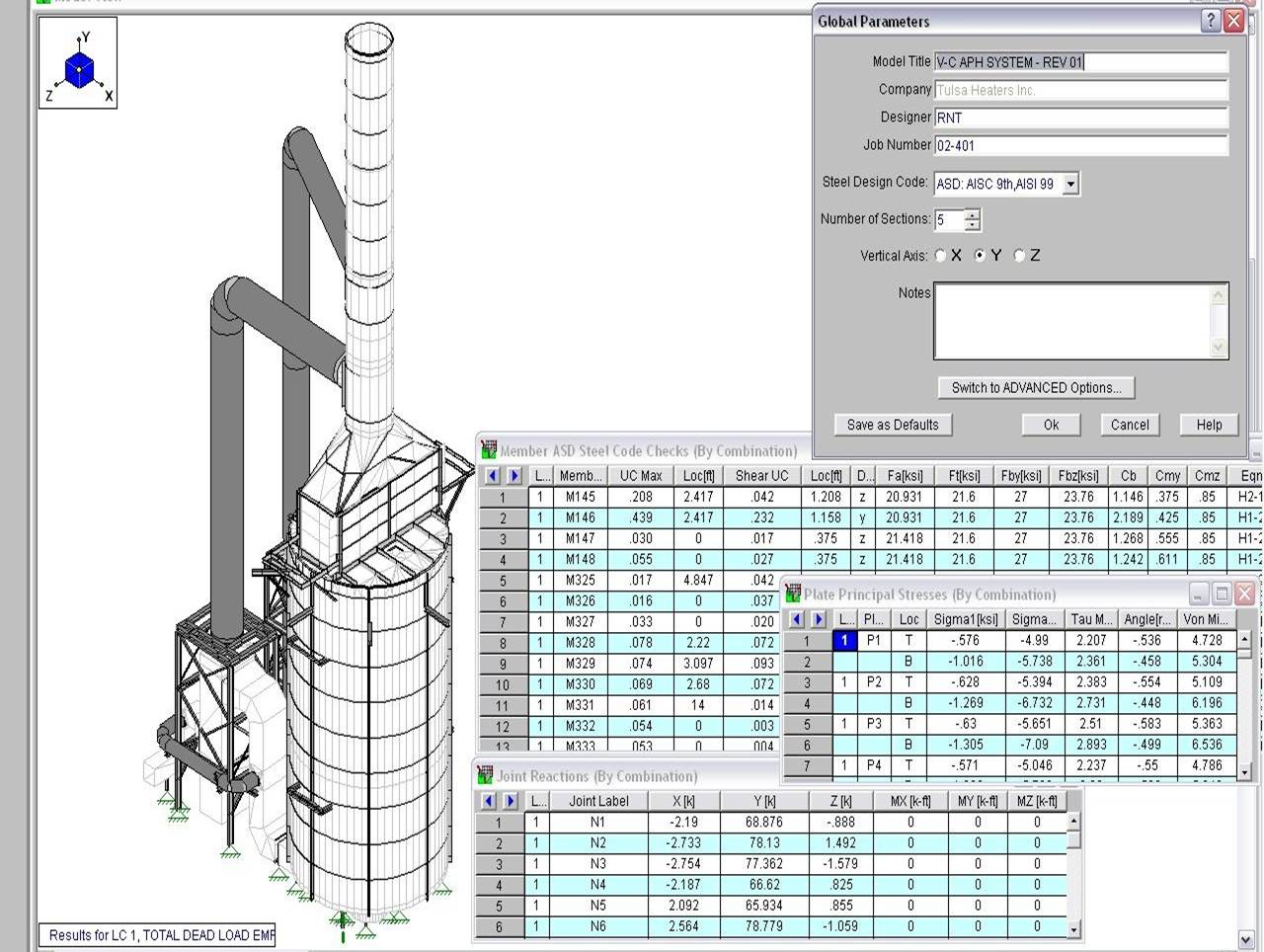Heater Modeling Programs
Specialized Computer Design Programs . . .
Tulsa Heaters, Inc. has an ongoing commitment to continuously improve its engineering and design software. THI has developed a library of computer programs that empower our engineers to build more accurate models, make better design decisions and develop products that provide the owner with greater operating flexibility and lower costs (both capital and operational).
From the calculation of process flow regimes to the hydraulic balance of an APH system to the determination of combustion gas compositions, THI has consistently committed resources to the development and enhancement of rigorous design software. This commitment pays dividends that every owner will realize in greater design accuracy, lower operating risk, higher product quality and better overall performance.
. . . with Field-Proven Accuracy
Heater Transfer / Process Design Modules
This set of proprietary programs allows THI's engineers to accurately model a full array of heater design parameters: fuel combustion, firebox temperature, radiant and convective (row-by-row) heat transfer, process pressure drop, film temperatures, tube metal temperatures, flue gas pressure drop, and stack draft. The radiant modeling programs are specific regarding heater coil geometry: vertical or horizontal cabin, single or double-fired and wicket, serpentine or helical coil layout. Verified by operating data from hundreds of heaters in the field, these computer models are some of the most reliable in the industry.
TWO-PHASE PROCESS FLUID PROGRAM
THI’s proprietary Two-Phase Process Fluid Program permits a detailed look at the characteristics of the process fluid as it flows through the heater coil. The program matches the fire-side heater duty and calculates inlet and outlet temperature and pressure conditions, velocities, and the thermodynamic and physical properties. This provides the designer with the following data at any point in the heater coil:
| Temperature Pressure Vaporization Enthalpy Film Coefficient Peak Film Temperature |
Peak Metal Temperature Linear Velocity Sonic Velocity Surface Tension |
Mixture and Phase • Density • Viscosity • Heat Capacity • Thermal Conductivity |
The program employs a modified SRK equation of state and uses API and other critically reviewed property correlations. The program has been continuously developed and updated for over 30 years. It has been proven on well over 250 installed heaters.
Thermal Cracking/Coking Program
THI’s proprietary Cracking/Coking Program was developed from the Two-Phase Process Fluid Program and has the cracking and polymerization (coking) reactions added in order to predict the coking regions within the tubes to guide the design to minimize coke formation. This also allows the calculation of the composition changes resulting from these reactions as the process fluid flows through the heater. The program provides the designer with the same information as the Two-Phase Process Fluid Program as well as additional parameters such as the bulk and film residence time above 800°F, and the incremental and cumulative coking factors. The program has been continuously developed and updated for over 20 years.
Mechanical Design Program
Mechanical Design Program SetTHI's structural design engineers also have a slate of powerful programs at their disposal, including: |
|||
|
|
|
|
|
Once a heater is designed, general arrangement drawings are produced in a state-of-the-art CADD® system. Using these CADD system’s THI has the capability to produce 3-D models. |
|||
